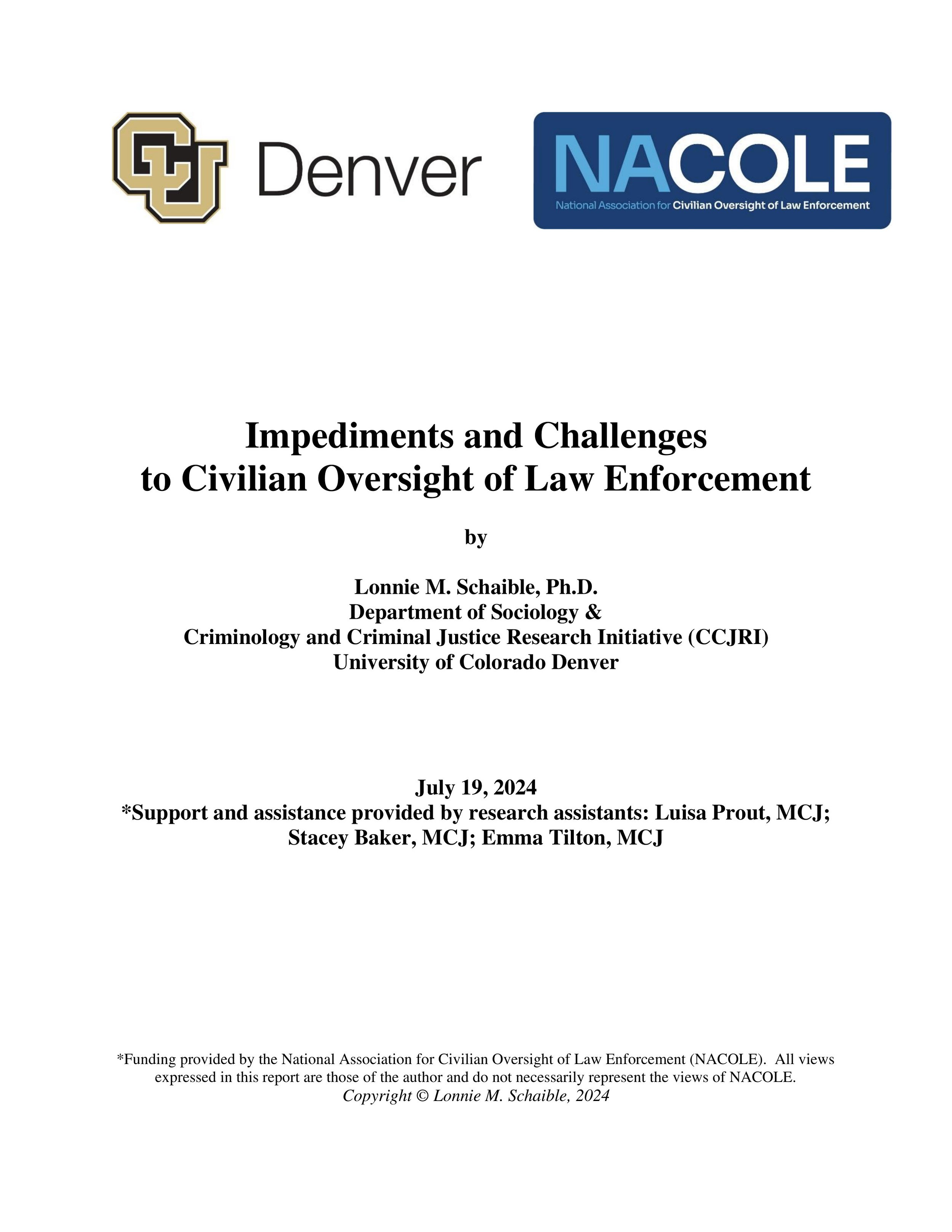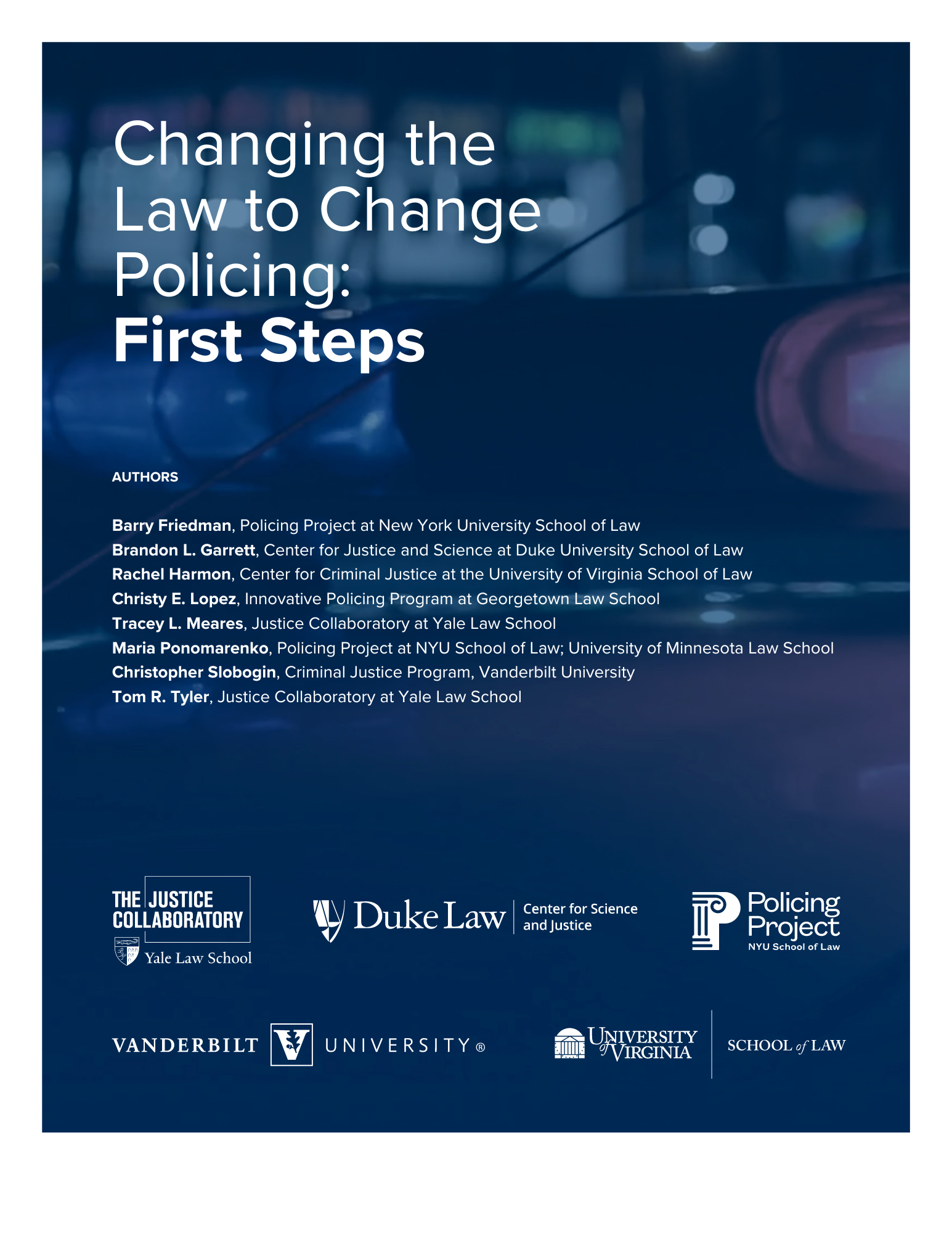By Lonnie M. Schaible
The oversight of law enforcement agencies, particularly at the local level, is crucial for ensuring accountability, transparency, and adherence to community standards. Historically, law enforcement controlled administrative mechanisms for investigating misconduct, determining discipline, and identifying areas for improvement of policy and practice have been inadequate. Moreover, law enforcement misconduct and accountability shortcomings have increasingly been subject to public scrutiny and calls for reform. As independent entities, civilian oversight agencies play a vital role in improving accountability by examining complaints, conducting or reviewing investigations, analyzing policies and practices, and/or making recommendations for improvement of law enforcement. Most cities with civilian oversight either have multiple oversight entities or a single entity with multiple responsibilities. Hybrid oversight models combining these powers are prevalent. Across initiatives and models, oversight confronts a variety of challenges. Drawing on interviews with oversight practitioners, empirical analysis of local statutes governing oversight, and analysis of the broader political context in which oversight operates, this report explores the landscape of civilian oversight, focusing on its powers, responsibilities, and challenges, and legislative trends that affect civilian oversight. Oversight Practitioners’ Perspectives on Principles of Effective Oversight Between August of 2022 and April of 2023, thirty-six oversight practitioners and community members were interviewed, representing twenty-six states and the District of Columbia. Interviewees included individuals with diverse backgrounds in oversight, ranging from those implementing new programs to retired veterans of the field. Interviewees also represented the perspectives of practitioners working in each of the four dominant models of oversight: commissions, review boards, investigative agencies, and auditor/monitors, as well as hybrid combinations of these. The interviews revealed a shared understanding of the significance of oversight work for promoting accountability, transparency, and trust between law enforcement and the communities that law enforcement serves. Practitioners also shared the value of ensuring fair treatment of both officers and community members, and addressing broader systemic concerns about police policies and practices. However, practitioners also identified significant impediments to effective oversight, especially: legal constraints, limited resources, and resistance from law enforcement agencies. Despite these challenges, practitioners indicated a commitment to overcoming impediments and advancing the goals of civilian oversight. They especially emphasized the importance of building strong relationships with law enforcement agencies, community stakeholders, and policymakers to garner support for oversight initiatives. Practitioners viewed collaboration and dialogue as essential for overcoming resistance and effecting meaningful change within police departments. Additionally, practitioners advocated for increased funding and resources to bolster the capacity of oversight entities and enhance their effectiveness in addressing systemic issues. Practitioners also widely noted the importance of local charters and ordinances and advocated for careful consideration of local needs and improvement of these statutes consistent with the National Association for Civilian Oversight of Law Enforcement’s (NACOLE) thirteen principles for effective oversight. Powers and Responsibilities of Civilian Oversight Entities Considering the importance of local charters and ordinances guiding oversight, and their adherence to NACOLE’s thirteen principles, a thorough empirical review of these is presented in this report, with a particular focus on statutes in the top one hundred most populous cities. Findings suggest that more robust oversight authorities tend to be more prevalent in the one hundred most populated cities; however, powers and authorities of oversight widely vary across these cities. Powers held by oversight entities include: reviewing internal investigations, conducting independent investigations, analyzing policy and practice, mediating complaints, making recommendations about discipline, and rarely, directly adjudicating or administrating of discipline. The most common blend of responsibilities includes reviewing internal investigations, conducting independent investigations, and analyzing policies and practices. While many entities benefit from statutory authority to conduct investigations, findings suggest the scope of investigative authority remains very limited in some jurisdictions. Likewise, provisions in charters and ordinances statutorily requiring adequate access to key personnel and data remains a challenge. In part such challenges result from the broader political context which oversight entities are subject to, and especially efforts by state legislatures to preempt local oversight authorities. State-level Legislative Trends in Civilian Oversight With limited federal legislation focused on police and civilian oversight, states have become battlegrounds for reform efforts. Between 2020 and 2023, over 37 states have passed legislation impacting civilian oversight. While most of these reforms advance oversight authority in a manner consistent with NACOLE’s thirteen principles for effective oversight, several states have enacted legislation that significantly impedes oversight. These impediments are especially likely to arise due to variations in home rule authority, with some states preempting local control over oversight efforts through legislation. Such legislation poses significant obstacles to implementation, maintenance, or reform of civilian oversight, and more broadly, policing. Notably, Florida, Arizona, Utah, Tennessee, and Wisconsin have recently implemented laws targeting existing oversight entities and/or imposing stringent requirements on new ones. These laws often limit the authority of oversight boards, impose unreasonable training requirements, or restrict the ability of oversight entities to influence law enforcement policies and practices. Despite such legislative constraints, existing oversight entities have adapted to comply with state statutory limitations, albeit often with authorities limited to advisory roles and restricted powers. Nonetheless, the limitations imposed by state laws can significantly hinder the effectiveness and independence of civilian oversight efforts and generally present a broader ongoing threat to the advancement of fair and effective civilian oversight. Conclusion The landscape of civilian oversight reflects a complex interplay of powers, responsibilities, legislative trends, and challenges. While oversight agencies play a critical role in promoting accountability and transparency in law enforcement, they also face significant obstacles, including local political and resource constraints, and increasingly, state-level preemption and legislative restrictions. Despite these challenges, efforts to adapt and uphold principles of effective oversight continue, highlighting the ongoing importance of civilian oversight in ensuring law enforcement accountability and community trust. To address these challenges, those seeking to advance and promote effective civilian oversight of law enforcement should advocate for legislative reform, engage in community outreach and education, invest in capacity building and training, foster collaborative partnerships, and prioritize continuous evaluation and improvement. By taking proactive and collaborative action, stakeholders can work together to overcome obstacles and strengthen civilian oversight, thereby advancing the principles of accountability, transparency, and trust.
Indianapolis, IN: National Association for Civilian Oversight of Law Enforcement (NACOLE) , 2024. 46p





















